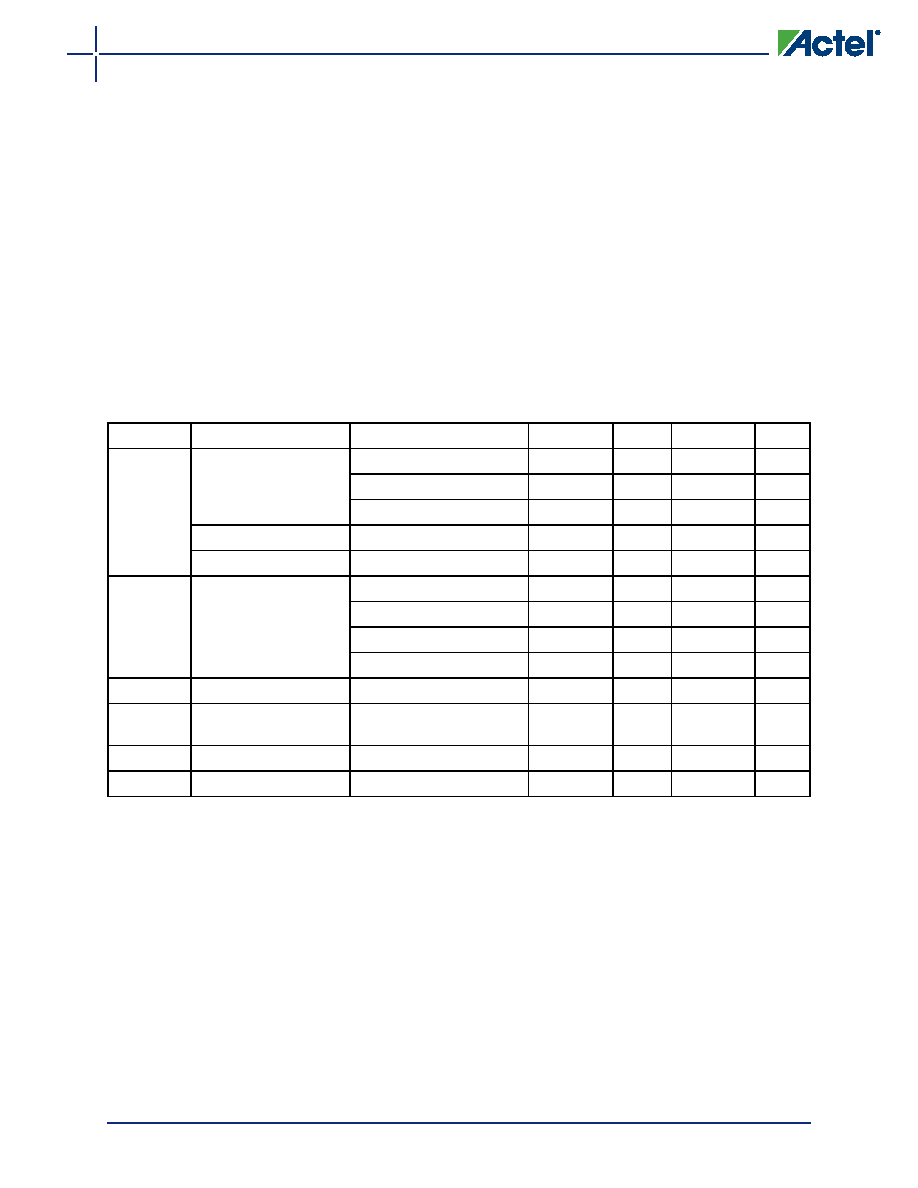- 您現(xiàn)在的位置:買賣IC網(wǎng) > PDF目錄180065 > M1AFS250-FPQ208 FPGA, 250000 GATES, PQFP208 PDF資料下載
參數(shù)資料
| 型號: | M1AFS250-FPQ208 |
| 元件分類: | FPGA |
| 英文描述: | FPGA, 250000 GATES, PQFP208 |
| 封裝: | 0.50 MM PITCH, PQFP-208 |
| 文件頁數(shù): | 252/318頁 |
| 文件大?。?/td> | 10129K |
| 代理商: | M1AFS250-FPQ208 |
第1頁第2頁第3頁第4頁第5頁第6頁第7頁第8頁第9頁第10頁第11頁第12頁第13頁第14頁第15頁第16頁第17頁第18頁第19頁第20頁第21頁第22頁第23頁第24頁第25頁第26頁第27頁第28頁第29頁第30頁第31頁第32頁第33頁第34頁第35頁第36頁第37頁第38頁第39頁第40頁第41頁第42頁第43頁第44頁第45頁第46頁第47頁第48頁第49頁第50頁第51頁第52頁第53頁第54頁第55頁第56頁第57頁第58頁第59頁第60頁第61頁第62頁第63頁第64頁第65頁第66頁第67頁第68頁第69頁第70頁第71頁第72頁第73頁第74頁第75頁第76頁第77頁第78頁第79頁第80頁第81頁第82頁第83頁第84頁第85頁第86頁第87頁第88頁第89頁第90頁第91頁第92頁第93頁第94頁第95頁第96頁第97頁第98頁第99頁第100頁第101頁第102頁第103頁第104頁第105頁第106頁第107頁第108頁第109頁第110頁第111頁第112頁第113頁第114頁第115頁第116頁第117頁第118頁第119頁第120頁第121頁第122頁第123頁第124頁第125頁第126頁第127頁第128頁第129頁第130頁第131頁第132頁第133頁第134頁第135頁第136頁第137頁第138頁第139頁第140頁第141頁第142頁第143頁第144頁第145頁第146頁第147頁第148頁第149頁第150頁第151頁第152頁第153頁第154頁第155頁第156頁第157頁第158頁第159頁第160頁第161頁第162頁第163頁第164頁第165頁第166頁第167頁第168頁第169頁第170頁第171頁第172頁第173頁第174頁第175頁第176頁第177頁第178頁第179頁第180頁第181頁第182頁第183頁第184頁第185頁第186頁第187頁第188頁第189頁第190頁第191頁第192頁第193頁第194頁第195頁第196頁第197頁第198頁第199頁第200頁第201頁第202頁第203頁第204頁第205頁第206頁第207頁第208頁第209頁第210頁第211頁第212頁第213頁第214頁第215頁第216頁第217頁第218頁第219頁第220頁第221頁第222頁第223頁第224頁第225頁第226頁第227頁第228頁第229頁第230頁第231頁第232頁第233頁第234頁第235頁第236頁第237頁第238頁第239頁第240頁第241頁第242頁第243頁第244頁第245頁第246頁第247頁第248頁第249頁第250頁第251頁當(dāng)前第252頁第253頁第254頁第255頁第256頁第257頁第258頁第259頁第260頁第261頁第262頁第263頁第264頁第265頁第266頁第267頁第268頁第269頁第270頁第271頁第272頁第273頁第274頁第275頁第276頁第277頁第278頁第279頁第280頁第281頁第282頁第283頁第284頁第285頁第286頁第287頁第288頁第289頁第290頁第291頁第292頁第293頁第294頁第295頁第296頁第297頁第298頁第299頁第300頁第301頁第302頁第303頁第304頁第305頁第306頁第307頁第308頁第309頁第310頁第311頁第312頁第313頁第314頁第315頁第316頁第317頁第318頁

Actel Fusion Mixed-Signal FPGAs
Pr el iminar y v1 .7
2-23
In Modes 1 to 3, the crystal oscillator is configured to support an external crystal or ceramic
resonator. These modes correspond to low, medium, and high gain. They differ in the crystal or
resonator frequency supported. The crystal or resonator is connected to the XTAL1 and XTAL2 pins.
Additionally, a capacitor is required on both XTAL1 and XTAL2 pins to ground (Figure 2-16 on
page 2-20). Table 2-10 on page 2-22 details each crystal oscillator mode, supported frequency
range, and recommended capacitor value.
A use model supported by the Fusion device involves powering down the core while the RTC
continues to run, clocked by the crystal oscillator. When powered down, the core cannot control
crystal oscillator mode pins. Also, some designers may wish to avoid the RTC altogether. To support
both situations, the crystal oscillator can be controlled by either the RTC or the FPGA core. If the
RTC is instantiated in the design, it will by default use RTCMODE[1:0] to set the crystal oscillator
control pins (the default). If the RTC is not used in the design, the FPGA core will set the crystal
oscillator control pins with MODE[1:0].
The crystal oscillator can be disabled/enabled by RTC or FPGA upon operation requirement. When
the crystal oscillator is disabled, XTL1 and XTL2 pins can be left floating.
Crystal Oscillator Characteristics
Table 2-11 Electrical Characteristics of the Crystal Oscillator
Parameter
Description
Conditions
Min.
Typ.
Max.
Units
FXTAL
Operating Frequency
Using External Crystal
0.032
20
MHz
Using Ceramic Resonator
0.5
8
MHz
Using RC Network
0.032
4
MHz
Output Duty Cycle
50
%
Output Jitter
With 10 MHz Crystal
50
ps RMS
IDYNXTAL
Operating Current
RC
0.6
mA
0.032–0.2 MHz
0.19
mA
0.2–2.0 MHz
0.6
mA
2.0–20.0 MHz
0.6
mA
ISTBXTAL
Sleep Current
10
A
PSRRXTAL
Power
Supply
Noise
Tolerance
0.5
Vp–p
VIHXTAL
Input Logic Level HIGH
90% of VCC
V
VILXTAL
Input Logic Level LOW
10% of VCC
V
相關(guān)PDF資料 |
PDF描述 |
|---|---|
| M1AFS250-FPQG208 | FPGA, 250000 GATES, PQFP208 |
| M1AFS250-FQN180 | FPGA, 250000 GATES, PBCC180 |
| M1AFS250-FQNG180 | FPGA, 250000 GATES, PBCC180 |
| M1AFS250-FFG256 | FPGA, 250000 GATES, PBGA256 |
| M1AFS250-FFGG256 | FPGA, 250000 GATES, PBGA256 |
相關(guān)代理商/技術(shù)參數(shù) |
參數(shù)描述 |
|---|---|
| M1AFS250-FPQ256ES | 制造商:ACTEL 制造商全稱:Actel Corporation 功能描述:Actel Fusion Mixed-Signal FPGAs |
| M1AFS250-FPQ256I | 制造商:ACTEL 制造商全稱:Actel Corporation 功能描述:Actel Fusion Mixed-Signal FPGAs |
| M1AFS250-FPQ256PP | 制造商:ACTEL 制造商全稱:Actel Corporation 功能描述:Actel Fusion Mixed-Signal FPGAs |
| M1AFS250-FPQG208 | 制造商:Microsemi Corporation 功能描述:FPGA FUSION 250K GATES 130NM 1.5V 208PQFP - Trays |
| M1AFS250-FPQG256ES | 制造商:ACTEL 制造商全稱:Actel Corporation 功能描述:Actel Fusion Mixed-Signal FPGAs |
發(fā)布緊急采購,3分鐘左右您將得到回復(fù)。